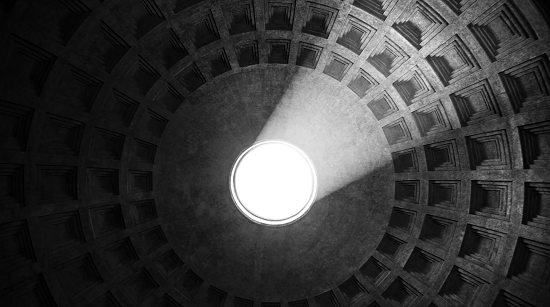 Saturday, May 11, 2024
Saturday, May 11, 2024  Saturday, May 11, 2024
Saturday, May 11, 2024 
Rome’s Pantheon stands defiant 2,000 years after it was built, its marble floors sheltered under the world’s largest unreinforced concrete dome. For decades, researchers have probed samples from Roman concrete structures—tombs, breakwaters, aqueducts, and wharves—to find out why these ancient buildings endure when modern concrete may crumble after only a few decades.
In a recent study, scientists have got closer to the answer—and their findings could reverberate long into the future. Not only is Roman concrete exponentially more durable than modern concrete, but it can also repair itself. Creating a modern equivalent that lasts longer than existing materials could reduce climate emissions and become a key component of resilient infrastructure, like seawalls. Currently, concrete is second only to water as the world’s most consumed material, and making it accounts for about 7 percent of global emissions.
“We are dealing with extremely complex material,” says Admir Masic, a researcher at the Massachusetts Institute of Technology who led this new research on Roman concrete. “To kind of reverse-engineer or understand the original way these civilizations made this material is just a nightmare.”
Until now, efforts to explain the longevity of Roman concrete have pointed to its use of volcanic tephra—the fragments of rock emitted in an eruption—mined in the Naples area and shipped to construction sites throughout the sprawling Roman empire. But Masic and his MIT colleagues, along with researchers from Harvard and laboratories in Italy and Switzerland, suggest another reason: heat. Using a number of different scanning techniques, they examined a sample from a city wall in Privernum, a 2,000-year-old archaeological site near Rome, focusing on millimeter-scale white chunks running through the sample, called lime clasts. These are not found in modern concrete.